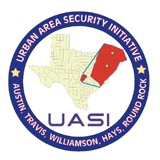Information
-
Audit Title
-
Document No.
-
Client / Site
-
Conducted on
-
Prepared by
-
Location
-
Personnel
ADVON
-
Date and time of command element briefing
-
General site briefing comppleted
-
LNO identified and staffed with local command element
-
Unit Commander, Command Staff, Unit Safety Officer, and NCOIC: are present at site briefing.
-
Companies are briefed that they are working in a crime zone.
-
ADVON given permission with PMT to advance and occupy incident site
-
Level I, II, and III evacuation protocols are explained and briefed.
-
Date and time ADVON & PMT launched
Site Occupation
-
Is there sufficient room for the operational footprint?
-
Current wind direction.
-
Terrain slope is level or negative toward the hot zone.
-
Hazard material is classified, provide details of material classification / identification.
-
PMT results are within acceptable exposure limits for site setup
-
Preliminary site tasking is completed
-
Request permission for main body movement to site.
-
Main body granted permission to move up and occupy site at:
Main Body on Site
-
Main Body on site at:
-
Initial safety briefing done with NCOICs and all ground personnel?
-
Briefed on known or suspected hazard, including RoE, S&S, Decon efficacy.
-
Briefed on loading, carrying, lifting, pinch points, and slip / trip, fall hazards.
-
Briefed electrical hazards, grounding, GFCI, and cord management.
-
Briefed on hydration, work periods and general operations.
-
Briefed on level I, II, and III evacuation contingencies.
-
Identified any alarm / alert LoC ( levels of concern) that must be reported.
-
Identified setup footprint and direction of travel.
-
Initiated site setup start time.
MCD setup preliminary walk down.
-
Identified any potential site hazards and corrected / adjusted. (terrain, debris, litter, potential evidence, etc.)
-
Generators at safe distance and grounded
-
Flash heaters at safe distance and location.
-
Blivets at appropriate distance and location.
-
Fire extinguishers located near all potential fire hazards.
-
Tent guy lines marked and anchored correctly.
-
Litter rollers locked and secured.
-
Patient litters in correct location and repair.
-
Detection devices prepped, bump tested and LoC posted in monitoring areas.
-
CCP located to reduce ancillary traffic between tents.
-
Med-Ops briefed on potential products and treatment.
-
Electrical and water line management is appropriate.
-
Electrical connections and load are correct for safe usage.
-
Operations are conducted to secure and identify personal belongings and patient effects. (crime scene)
-
Patient ID and disposition is identified.
-
Final safety walk and permission to go hot communicated to command at;
TTP Operational Checks
-
All line personnel briefed and functioning under direction of respective NCOICs.
-
All medical treatment follows START and combat lifesaver TTP.
-
Any lane problems are reported to unit and command safety personnel.









